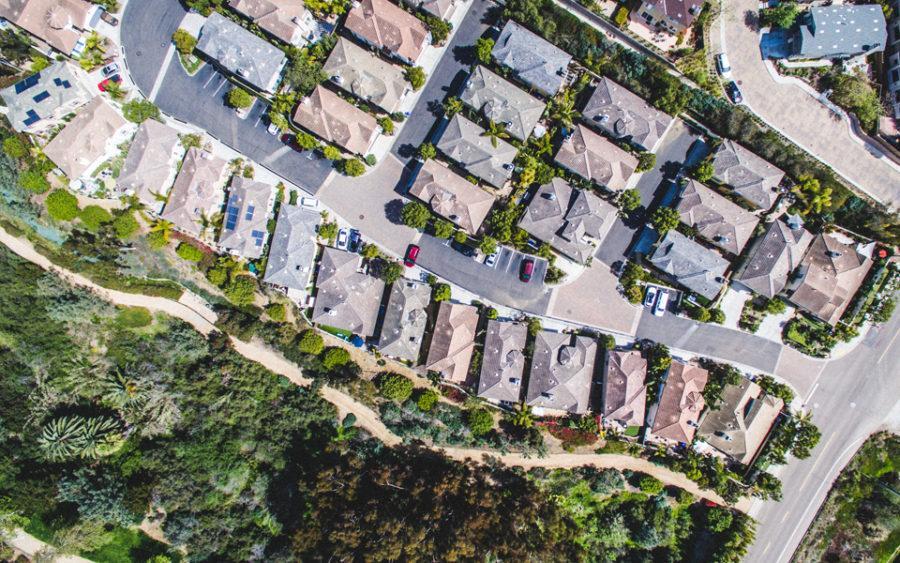Grandfathering granny flats: Encinitas eyes state bill to help housing crunch
August 30, 2018
Home is where the drywall is up to code, or it’s in the backyard, above the garage or an added second story. Accessory dwelling units will have a chance to be counted in Encinitas’ housing requirement.
SB-1226, a bill that unanimously passed through the California Senate Housing and Development Committee on June 20, puts code dissection for accessory dwelling units in the hands of building officials and, hopefully, streamlines the process for homeowners looking to put their converted garage, granny flat, tiny house or rented-out basement on the city’s books.
For a dwelling unit to be grandfathered in with a permit, a building official inspects the unit based off the building code from when the main house was originally constructed.
This legislation is declaratory of a mixture of existing laws, those being Health and Safety Code 17960, letting housing authorities interpret building code, state Building Standards Code 104.10, allowing housing authorities to approve modifications to an existing home, and California Building Standards Code 104.11, which allows the housing authority to approve the use of alternate materials, according to state Sen. Pat Bates’ office.
Legislation around accessory units has been an area of focus for the California legislature since September 2016, when SB-1069 and AB-2299 were signed into law by Gov. Jerry Brown, with the former approving zoning for accessory units in residential neighborhoods and the latter including them as affordable housing.
Such efforts are in tandem with updates to Encinitas’ proposed housing plan, which is on the ballot for this fall after the City Council approved language earlier in August. Measure U asks Encinitas residents to consider proposed locations and procedures for compliance with state-mandated affordable and accessible housing requirements.
Existing potential for housing
According to Bates (R-Laguna Niguel, 36th District), who introduced SB-1226, the goal is to assist cities facing housing shortages, such as Encinitas.
“It helps Encinitas meet the state requirement for their housing element; that is why it’s essential,” Bates said.
The bill allows accessory dwelling units to be added to the count so long as they meet code for when the main dwelling unit was built.
Previously, and until the bill is signed by Brown, if a property owner wants their accessory unit on the books, they’d have to go through the costly process of bringing that building up to current code, explained Brenda Wisneski, Encinitas’ development services director.
“We just hope to get everybody legal so we can count the units because we see accessory dwelling units as being a great force for supporting out housing needs,” Wisneski said.
One front in housing stock battle
To Encinitas Mayor Catherine Blakespear, the bill is one of the many fronts that may help resolve Encinitas’ affordable-housing crisis.
“We have an affordable housing problem, that’s a shortage in Encinitas, and that needs to be pursued on multiple fronts,” Blakespear said. “We are trying to give additional tools to property owners to permit these units.”
Outside of boosting housing numbers, the bill also ensures safety from legal repercussions for property owners who built these accessory units.
“The idea is to make sure the housing stock that we have is safe and habitable,” Blakespear said. “It’s also to allow people who have accessory units to not fear that their neighbor is going to turn them in.”
Furthering this narrative of bringing units out of the shadows, Bates estimates that up to a thousand accessory units are off the books and unchecked for code in Encinitas.
“It encourages many of those accessory dwelling units that are currently not reported to come out of the shadows and help ensure that they are safe,” Bates said.
Using the code from when the house was built to inspect these units eases property owners out of the dark since, according to Blakespear, holding them up to current code is counterintuitive.
“The idea behind the bill is to give residents more opportunities to permit these units,” Blakespear said. “If you think about it, almost every house in the city isn’t up to current code.”
This also disperses the housing through Encinitas’ suburban sprawl, Blakespear explained.
According to Wisneski, the second edge of the bill is that it also ensures that these units are safe, at least by the code from when they were built.
“What 1226 says is that if we can find some way of documenting that that structure was built previously, even back into the ’80s, that we can use the building code that was in place during that time and we will issue a building permit to legalize that unit,” Wisneski said.
Joel Vaughn is a North County freelance writer




